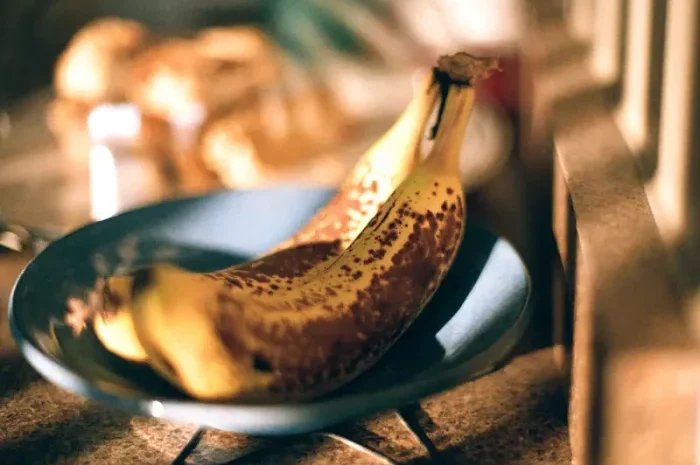Managing diabetes is not only about controlling blood sugar levels but also about maintaining a balanced and nutritious diet that supports overall health. For people living with diabetes, making wise food choices is crucial to maintaining glucose levels and preventing complications. Many individuals believe that diabetes imposes strict limitations on the foods they can enjoy, but there is a wide array of foods that diabetics can eat freely, without compromising their health. These foods offer high nutritional value while having little to no negative impact on blood glucose levels.
In this article, we’ll explore the foods that diabetics can incorporate into their diet freely, providing variety and flavor without causing blood sugar spikes. These options allow for flexibility in meal planning while supporting the body’s overall well-being.
Non-Starchy Vegetables: The Nutrient Powerhouses
Non-starchy vegetables are a diabetic’s best friend. These vegetables are low in calories and carbohydrates, making them an excellent choice for anyone looking to manage their blood sugar levels. They provide essential vitamins, minerals, and fiber, which aid digestion, support immune function, and improve overall health.
Examples of non-starchy vegetables include:
Leafy greens:such as spinach, kale, arugula, and Swiss chard.
Cruciferous vegetables: like broccoli, cauliflower, Brussels sprouts, and cabbage.
Other options: include cucumbers, bell peppers, zucchini, asparagus, and celery.
These vegetables are versatile and can be eaten raw, steamed, roasted, or sautéed, making them an ideal addition to meals. The fiber content in non-starchy vegetables helps regulate blood sugar levels by slowing the absorption of carbohydrates into the bloodstream.
Leafy Greens: Rich in Nutrients, Low in Carbs
Leafy greens like spinach, kale, and collard greens are nutrient-dense foods that diabetics can consume freely. These greens are rich in vitamins A, C, and K, as well as essential minerals such as magnesium and potassium. They are also high in antioxidants that protect the body from oxidative stress, which can contribute to complications in diabetes.
For example, spinach is particularly low in calories and carbohydrates, with one cup of raw spinach containing less than one gram of carbohydrates. This makes it an excellent choice for those looking to manage their glucose levels while also getting a good dose of nutrition.
Incorporating leafy greens into salads, smoothies, or as side dishes can enhance the overall nutritional quality of a diabetic meal plan.
Cruciferous Vegetables: Low-Carb, High-Fiber Choices
Cruciferous vegetables like broccoli, cauliflower, and Brussels sprouts are high in fiber, low in carbohydrates, and packed with important nutrients such as vitamin C, folate, and potassium. Fiber is particularly beneficial for diabetics, as it helps slow down digestion, preventing rapid spikes in blood sugar levels after meals.
Broccoli, for instance, contains a mere 6 grams of carbohydrates per cup while providing over 2 grams of fiber. This makes it a filling, nutritious, and blood sugar-friendly option for diabetics. Cauliflower is another versatile vegetable that can be used as a low-carb substitute for grains such as rice and potatoes, allowing diabetics to enjoy familiar dishes without the glucose surge.
These vegetables can be steamed, roasted, or added to soups and stir-fries for a delicious, nutrient-rich meal.
Protein-Rich Foods: Stabilizing Blood Sugar
Protein plays a crucial role in stabilizing blood sugar levels, as it does not cause significant increases in glucose. Lean proteins are especially beneficial for diabetics, as they provide essential nutrients without added unhealthy fats.
Some protein-rich foods that diabetics can eat freely include:
Eggs: Eggs are a low-carb, high-protein food that can be enjoyed in various ways. They have minimal impact on blood sugar levels and provide important nutrients such as vitamins B12 and D.
Fish: Fatty fish like salmon, mackerel, and sardines are excellent sources of omega-3 fatty acids, which promote heart health. Fish is also a high-protein, low-carb food, making it an ideal choice for diabetics.
Poultry: Skinless chicken and turkey are lean sources of protein that can be incorporated into a diabetic diet without raising blood sugar levels.
These protein-rich foods help diabetics maintain steady energy levels and keep hunger at bay.
Healthy Fats: Supporting Heart Health
Healthy fats are essential for overall well-being, and they can be consumed freely by diabetics in moderation. These fats are important for heart health and provide sustained energy without impacting blood sugar levels.
Examples of healthy fats include:
Avocados: Avocados are a great source of monounsaturated fats, which have been shown to improve heart health and insulin sensitivity. They also contain fiber, which further helps regulate blood sugar levels.
Nuts and seeds: Almonds, walnuts, chia seeds, and flaxseeds are rich in healthy fats, fiber, and protein, making them an excellent choice for diabetics. They are low in carbohydrates and can be eaten as snacks or added to meals for extra crunch and nutrition.
Olive oil: Extra virgin olive oil is a heart-healthy fat that can be used in cooking, salad dressings, or as a finishing touch on roasted vegetables.
Healthy fats provide satiety and help the body absorb fat-soluble vitamins like A, D, E, and K, all of which are essential for long-term health.
Berries: Nature’s Sweet Treats
For diabetics, fruit consumption must be approached with caution, as many fruits contain high levels of natural sugars. However, certain fruits, particularly berries, are low in carbohydrates and can be enjoyed in moderation.
Berries such as strawberries, blueberries, raspberries, and blackberries are packed with fiber, vitamins, and antioxidants while having a minimal impact on blood sugar levels. The fiber in berries helps slow the absorption of sugar, preventing blood glucose spikes.
A half-cup serving of blueberries contains around 10 grams of carbohydrates and 2 grams of fiber, making it a delicious and diabetes-friendly snack. Incorporating berries into meals or snacks is an excellent way for diabetics to enjoy the sweetness of fruit without compromising blood sugar control.
Low-Glycemic Index Foods: Slow and Steady Energy
The glycemic index (GI) measures how quickly a food raises blood sugar levels. Foods with a low glycemic index have a slower, more gradual impact on blood sugar, making them ideal for diabetics.
Some low-GI foods that can be eaten freely include:
Legumes: Beans, lentils, and chickpeas are rich in fiber and protein, making them a perfect addition to a diabetic meal plan. Their low GI helps regulate blood sugar levels and keeps you feeling full for longer periods.
Oats: Steel-cut or rolled oats are whole grains that have a low GI. They provide fiber and a steady release of energy, making them a great breakfast option for diabetics.
Whole grains: Quinoa, brown rice, and barley are examples of low-GI whole grains that provide fiber and essential nutrients without causing blood sugar spikes.
Incorporating these foods into meals can help diabetics maintain stable blood sugar levels throughout the day.
Sugar-Free and Low-Carb Snacks: Satisfying Cravings
Managing diabetes doesn’t mean eliminating all snacks. There are plenty of sugar-free and low-carb snack options that diabetics can enjoy freely without impacting their glucose levels.
Some examples of diabetic-friendly snacks include:
Sugar-free gelatin: This low-calorie, sugar-free treat can satisfy sweet cravings without affecting blood sugar.
Vegetable sticks with hummus: Non-starchy vegetables such as carrots, celery, and bell peppers paired with a high-protein dip like hummus make for a satisfying, blood sugar-friendly snack.
Cheese: Low-fat cheeses such as mozzarella or cottage cheese can be eaten as a snack or added to meals for extra protein and calcium.
These snacks provide flavor and satisfaction without the risk of a blood sugar spike.
Hydration: Water and Unsweetened Beverages
Proper hydration is essential for diabetics, as it helps the kidneys flush excess sugar from the blood. Water is the best choice for staying hydrated, as it has no calories, sugar, or carbohydrates.
Other unsweetened beverage options include:
Herbal teas: These can provide a flavorful alternative to sugary drinks without affecting blood sugar levels.
Black coffee: Plain coffee without added sugar or cream can be enjoyed freely in moderation.
Staying hydrated is crucial for overall health, especially for diabetics looking to manage their blood sugar levels.
See also: What Starchy Foods Should Diabetics Avoid?
Conclusion
While diabetes does require careful attention to diet, it is important to understand that there are plenty of foods diabetics can eat freely, without fear of compromising their health. Non-starchy vegetables, lean proteins, healthy fats, low-glycemic index foods, and certain fruits like berries offer variety and nutrition while supporting blood sugar control. By making informed food choices, diabetics can enjoy a diverse and flavorful diet that promotes long-term health and well-being.
Related topics:
How Often Do Diabetics Need to Eat?

























